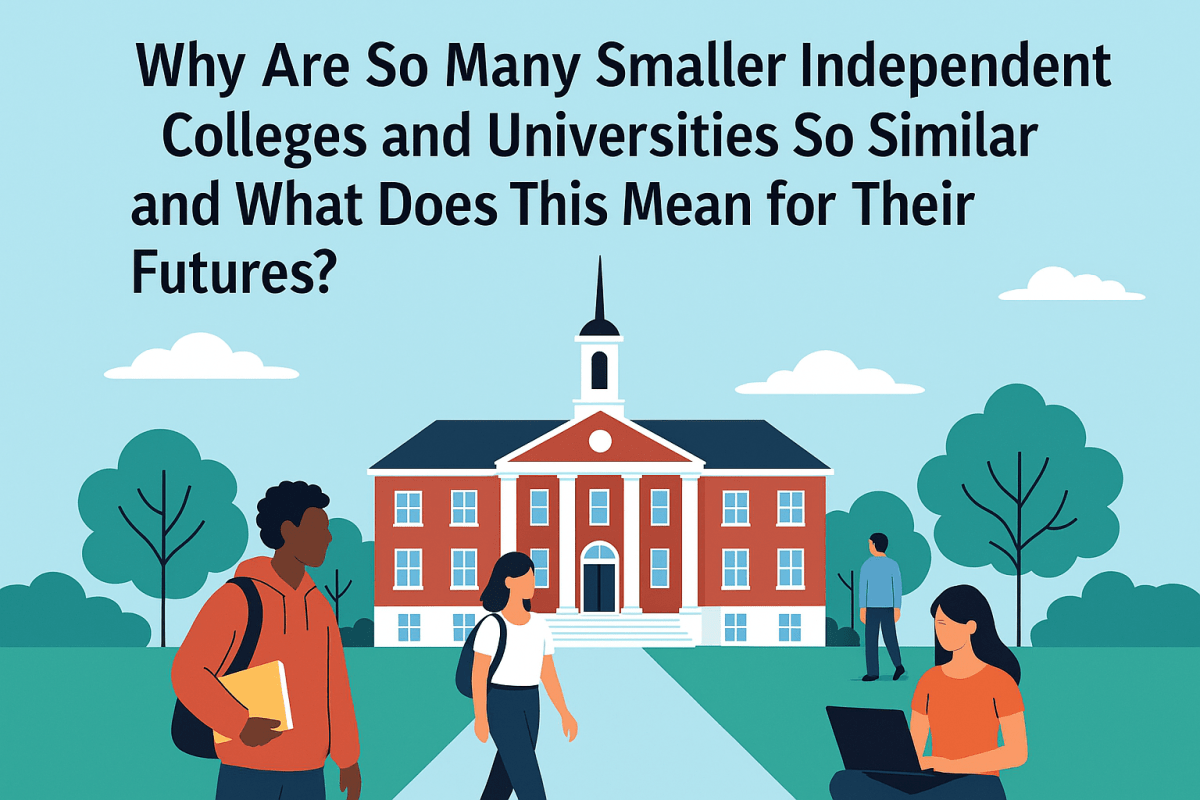The idea of a “Hillsborough Law” has been in circulation for years.
Campaigners – led by families of those who died at at Hillsborough Stadium in 1989, and joined more recently by those bereaved by Grenfell, Covid, and the death of headteacher Ruth Perry – have long argued that public authorities must be placed under a clear, statutory duty to tell the truth.
Manchester Mayor (and emergent Labour leadership hopeful) Andy Burnham first introduced a Private Members’ Bill in 2017, but it fell with the general election.
Labour then adopted the idea as policy in 2022, and after years of pressure – including a personal promise from Keir Starmer in the run-up to the 2024 election – the King’s Speech in July 2024 confirmed it would be brought forward.
A year later, ministers missed the April anniversary deadline – triggering frustration from campaigners and months of rumour about officials attempting to water down the Bill – before finally introducing the Bill to Parliament now under the stewardship of new Justice Secretary David Lammy.
To campaigners’ relief, this is not just symbolic legislation – it’s about correcting a deep structural imbalance, and very much connects to what little there is in Starmer’s vision – the idea and ideals of public service and a public realm “on the side of truth and justice”.
For decades, bereaved families navigating inquests have faced publicly funded barristers representing the police, the NHS, local councils, or universities – while they themselves have been forced to crowdfund. They have seen evidence lost, withheld, or destroyed, and have encountered institutions that default to defensive strategies – preferring to protect their reputation than face accountability.
The Public Office (Accountability) Bill (along with its explanatory notes and multiple impact assessments) – colloquially known as the Hillsborough Law – attempts to change that dynamic. It is about “candour”, legal aid, and cultural reform. And although the national debate has focused on disasters and policing, the legislation will very much apply to universities.
What the Bill does
At its core, the Bill does two things. First, it imposes a statutory duty of candour on public authorities and officials. That means a proactive obligation to be frank, open, and transparent when dealing with inquiries, investigations, and inquests. In some cases, it criminalises obstruction, dishonesty, and selective disclosure.
Second, it guarantees non-means-tested legal aid for bereaved families involved in inquests and inquiries where public authorities are represented. That ends the unjust asymmetry of families crowdfunding – while the state and its arms funds lawyers to defend itself.
Alongside this, the Bill codifies a replacement for the common law offence of misconduct in public office, creates new statutory misconduct offences, and requires public authorities to adopt and publish their own codes of ethical conduct embedding candour and the Nolan principles.
The schedules name government departments, police forces, NHS bodies, schools, and further education corporations. But it also applies to any body carrying out “functions of a public nature” – a familiar phrase from the Human Rights Act and the Freedom of Information Act. Universities are covered.
Pre-1992 universities were founded by Royal Charter or statute, and their governing bodies often include members approved by ministers or the Crown. Post-1992 universities are higher education corporations created by the 1992 Act. They fit easily within the test. Whether private providers, where they are registered with the Office for Students (OfS) and teach (quasi-)publicly funded students, will be caught under the “functions of a public nature” clause.
For universities and their staff, this ought to be a profound change to the way they respond to tragedy, handle complaints, and manage their obligations to students and the public.
Candour in inquiries and inquests
In Part 2, Chapter 1, the Bill sets out the statutory duty of candour in relation to formal, statutory inquiries, investigations, and inquests.
The duty is not passive – it requires public authorities to notify an inquiry if they hold relevant material, preserve records, provide assistance, and correct errors or omissions. Institutions can’t wait until a chair or coroner demands disclosure – they have to surface relevant material themselves.
A new mechanism – a compliance direction – then strengthens the framework. Chairs of inquiries and coroners can issue formal directions requiring disclosure, written statements, clarifications, or corrections. These are binding. If an authority, or the official responsible for compliance, ignores, delays, or obstructs such directions, it becomes a criminal offence if done deliberately or recklessly.
For universities, the most direct likely application will likely be to coroners’ inquests into student deaths. If, for example, a university was aware that it held key documents about a student’s support plan, assessment records, or internal communications, the duty would compel it to notify the coroner and disclose them proactively. The current norm – where families must ask precise questions and often guess at what exists – would be replaced by a statutory expectation of candour.
If, as another example, a coroner designated a university as an interested person, a compliance direction could require a formal position statement explaining its role, structured disclosure of documents, and timely corrections if errors emerged. Senior officers will be personally responsible for compliance.
And if relevant staff had first-hand knowledge of a critical incident – say, supervising an assessment where a student’s distress became acute – they could not quietly stay in the background. The university would be under pressure to identify and disclose their evidence candidly.
The Bill also extends legal aid. Families would be guaranteed representation in any inquest where a public authority is an interested person. That means if, for example, a university and an NHS trust were both in scope, the family would not have to crowdfund tens of thousands of pounds to achieve parity of arms.
At present, coroners have wide powers, but families often lack the leverage to ensure they are exercised fully. Coroners have to answer the four statutory questions – who, where, when, how – and they often interpret “how” narrowly. Families often push for broader scope, but institutions can resist. A statutory duty of candour would not change the coroner’s legal remit, but it should alter the behaviour of institutions within that remit. Selective disclosure, defensive positioning, and late document dumps would become high-risk strategies.
It’s also notable that the Bill places the duty personally on those in charge of public authorities. In the university context, that means senior leadership cannot outsource disclosure entirely to lawyers or middle managers. Accountability flows up to the governing body and vice chancellor.
And coroners’ Prevention of Future Deaths reports (PFDs) matter too. With fuller disclosure under candour, coroners are more likely to identify systemic failings in universities and recommend changes. While coroners cannot assign civil liability, their reports can shape policy and practice across the sector.
Crucially, the Bill specifically recognises the problem of “information asymmetry.” Families can’t know what to ask for if they do not know what exists. By flipping the responsibility – making universities proactively disclose rather than forcing families to drag material into the open – the duty addresses that asymmetry head-on.
The scope of this bit of the Bill is wide, but not limitless. It clearly applies to coroners’ inquests, Fatal Accident Inquiries in Scotland, and statutory public inquiries under the 2005 Act. It also extends to non-statutory inquiries set up by ministers, and there is a power for the Secretary of State (or devolved governments) to designate other investigations by regulation.
But it does not automatically capture every process that universities are familiar with – complaints investigated by the OIA in England and Wales, regulatory investigations by OfS, Medr or the SFC, professional regulator fitness to practise panels, or independent reviews commissioned internally are all outside its scope as drafted.
In those arenas, candour would only bite through the separate Chapter 2 duty to adopt and apply an ethical code (see below), rather than through the compliance-direction machinery of Chapter 1. But for those types of iniquity and investigation explicitly covered, it means candour is no longer optional or reputational – it is statutory, enforceable, and personal.
Candour in day-to-day conduct
If Part 2, Chapter 1 is about how institutions behave in high-profile inquiries, Chapter 2 is about how they behave every day. The Bill as drafted would require every public authority to adopt and publish a code of ethical conduct. In that Code, universities will be required to:
- articulate the Nolan principles (selflessness, integrity, objectivity, accountability, openness, honesty, leadership);
- define a duty of candour for the authority’s context;
- explain consequences for breaches, including disciplinary and professional sanctions;
- set out whistleblowing and complaint routes for staff and the public;
- be public, regularly reviewed, and supported by training.
For universities, this will mean embedding candour into teaching, research, administration, and student support.
There are all sorts of potential implications. Consider complaints handling – at present, plenty of universities instruct lawyers at an early stage to assess litigation risk. For complainants, that shifts the emphasis to protecting the institution rather than resolving the complaint candidly. A student might receive partial explanations, documents only when pressed, or carefully worded responses that obscure institutional failings.
If the idea is that the Code required under Chapter 2 incorporates and translates the principles reflected in Chapter 1, that approach to complaints would be unacceptable. The code should require:
- proactive disclosure of relevant information during a complaint;
- corrections when errors are identified;
- clear explanations of decisions, not just outcomes;
- openness even where disclosure is uncomfortable.
- and a failure to act candidly could itself be misconduct, separate from the original complaint.
For staff, the implications are significant. An academic accused of discrimination could no longer rely on the institution minimising disclosure to reduce liability. If records show concerns were raised earlier, candour might require acknowledging that, not burying it. Someone processing appeals could not quietly omit inconvenient information from a report.
It raises staff-side concerns. The NHS experience shows frontline workers often feel candour exposes them personally, while leadership remains insulated. In universities, staff already operate under high pressure – REF, TEF, student satisfaction surveys, and reputational risk all loom large.
A candour duty could feel like additional personal exposure – unless universities design their codes carefully, the burden may fall disproportionately on individual staff rather than leadership.
And the implications extend beyond complaints. In admissions, candour could mean being frank with applicants about course viability or resource constraints. In research, it could mean full disclosure of conflicts of interest. In governance, it could mean sharing risk assessments with staff and students rather than keeping them confidential.
The duty also requires universities to build internal systems – staff will have to be trained to understand candour, managers will be required to reinforce it, and whistleblowing protections will have to be clear. And codes will need to specify sanctions for breaches – shifting candour from an abstract principle to a live HR and governance issue. If the Higher Education (Freedom of Speech) Act offers staff protection for saying things out loud, at least in theory the Public Office (Accountability) Bill will require universities to require staff to say (some) things out loud.
Legal context
There are still limits. The Bill is explicit that candour doesn’t override other legal restrictions – data protection, privilege, and statutory exemptions still apply. A university can’t disclose student medical records without consent, nor breach confidentiality agreements lawfully in place. But the default flips – the presumption is disclosure unless legally barred, not concealment unless forced.
That will all interact directly with stuff like Equality Act duties and consumer protection law. Universities might resist admissions in complaints because acknowledging discrimination or misleading marketing creates liability. Under Chapter 2, the risk is reversed – concealing those admissions would itself be a statutory breach. The Digital Markets, Competition and Consumers Act 2024 and CMA guidance already push towards transparency in student marketing. A candour duty would add a new, statutory dimension.
In practical terms, universities will need to rewrite policies, retrain staff, and rethink how they interact with students. Complaints offices, HR teams, and legal advisers will all have to internalise the new default of candour. The reputational instinct to minimise admissions of fault will be directly challenged by statutory obligation.
In theory, as liability risk increases, so should trust. Universities are often criticised for opacity, defensiveness, and spin – a statutory candour duty offers a chance to change that culture. Students making complaints would be entitled not just to process fairness but to institutional honesty, and staff accused of misconduct would know that concealment or minimisation would itself be a breach. Governing bodies would have to lead by example, publishing codes and demonstrating compliance.
Regulators and adjudicators
Of course if candour becomes law, regulators and adjudicators will need to respond. As it stands, no specific regulator is identified for monitoring compliance with the “devolved” duty under Chapter 2 – that may get added as the Bill progresses, but even if it doesn’t, the interactions with other areas of regulation make it wise for there to be change.
In England and Wales, the Office of the Independent Adjudicator (OIA) already reviews individual complaints and publishes a Good Practice Framework. It emphasises fairness, transparency, and clarity, but not candour as a statutory duty per se.
Once Chapter 2 is in force, the OIA would likely need to update its framework to reference candour explicitly. It would then be able to hold universities to account not just against good practice, but against a legal standard – did the university act candidly in its handling of this complaint?
The Office for Students (OfS) then has wider systemic oversight. The regulatory framework includes Condition E2 on management and governance, and requires compliance with Public Interest Governance Principles. These do currently cover accountability and academic freedom – but not candour. If universities are under a statutory candour duty, OfS will almost certainly need to amend the PIGPs or issue guidance to reflect it.
How this all sits with other existing regimes like the Freedom of Information Act (FOIA) will be another big question. FOIA already imposes transparency duties, but universities often take a restrictive approach, especially private providers not designated as public authorities under FOIA. The candour duty would run in parallel – requiring disclosure in complaints and inquests even where FOIA might not apply.
Other sections of the Bill
While most attention has focused on the duty of candour and the reforms to inquests, the Bill also contains other important provisions that will reshape the accountability of public authorities.
Part 1 of the Bill tackles the long-running debate around misconduct in public office. The common law offence – dating back centuries – has long been criticised as vague, inconsistently applied, and overly reliant on judicial interpretation.
The Bill abolishes the common law offence and replaces it with a new statutory framework, creating clear offences for serious misconduct by public officials, defining more precisely what counts as abuse of position or wilful neglect of duty. For universities, where senior leaders or governors are increasingly seen as “public officials” when exercising functions of a public nature, this should provide sharper statutory clarity on when misconduct could cross from an HR or governance issue into criminal liability.
The Bill also addresses investigations and inquiries more broadly. It enhances powers for inquiry chairs and coroners not just to compel evidence, but to ensure compliance is timely and truthful. The creation of compliance directions backed by criminal sanction sits here, but the wider context is about rebalancing relationships.
Families and victims have long argued that inquiries too often become adversarial battles against obfuscating institutions. As the Bill shifts legal duties onto the institutions themselves, it tries to realign incentives so truth-seeking, not reputation-protection, dominates. And Part 2 expects those principles to be reflected inside universities too.
Another significant element is the reform of legal aid at inquests. For the first time, non-means-tested legal aid will be automatically available for bereaved families whenever a public authority is represented at an inquest. This is not just a financial change – it’s another attempt to end the asymmetry that has often characterised high-profile inquests. For universities, it should mean that whenever they are an interested person, families will now face them on an equal legal footing.
The Bill also contains provisions on whistleblowing and reporting duties – where staff often feel trapped between loyalty to the institution and responsibility to students or the public. Public authorities will have to create clear internal mechanisms to support those who raise concerns, and codes of conduct will have to integrate protections and processes for staff who disclose wrongdoing.
Taken together, these other sections of the Bill flesh out the candour framework, create sharper criminal liability for misconduct, and give families, the public and/or students and staff stronger levers for truth and accountability.
Territorial application
The Bill extends to England and Wales, with many provisions applying directly to public authorities operating there. Scotland and Northern Ireland have their own legal systems and inquest regimes, so the Bill’s application is more limited. But universities across the UK will need to pay attention.
In Scotland, there is no coroner system, but Fatal Accident Inquiries serve a similar role. While the Bill itself does not apply wholesale, the Scottish Government and the Scottish Funding Council are likely to face pressure to adopt parallel reforms – particularly on candour and legal aid – to avoid a two-tier approach for bereaved families.
In Wales, higher education is now regulated under the Tertiary Education and Research (Wales) Act 2022, with the new Commission for Tertiary Education and Research (CTER) taking over regulatory functions. Although the Bill applies to Wales, CTER will need to consider how candour duties interact with its quality and governance oversight.
And in Northern Ireland, inquests operate differently again, and universities there are few in number. The territorial extent of the Bill is narrower, but questions will inevitably arise about parity of rights for families and students.
For providers operating across borders – particularly cross-UK institutions or partnerships – the patchwork will be complex. Consistency will matter, and regulators in devolved nations might usefully align their governance principles and duties to ensure students and families are not disadvantaged by geography.
Culture change
Of course, policy is one thing – culture is another. The NHS has had its own statutory duty of candour for a decade, requiring openness with patients when things go wrong. But implementation has been patchy – studies and reviews have found variability, defensiveness, and resistance. In practice, candour clearly depends not just on statutory text but on leadership, training, and incentives.
The same will be true in higher education. Universities are complex, professionalised, and reputationally sensitive – candour is simply not their default culture. Embedding it will require governing bodies and senior staff to model openness, leaders to embrace uncomfortable truths, and lawyers to reframe their advice.
The risk is that candour becomes yet another procedural box-tick – a paragraph in a code, a slide in induction training – while the real behaviours remain defensive. The opportunity is for universities to embrace candour as a chance to rebuild trust with students, staff, and the public.
A particularly thorny question is how the Bill will apply to the growing number of private higher education providers. A brief glance at WhatDoTheyKnow suggests that they routinely refuse Freedom of Information requests on the basis that they are not designated as public authorities under FOIA, despite (in England) often being registered with the Office for Students and enrolling thousands of publicly funded students.
On the face of the Bill, they would only fall within scope of the candour duty where they are performing “functions of a public nature” – a phrase that has generated years of litigation under the Human Rights Act and remains contestable.
That creates a risk of a two-tier candour regime in higher education – so one way to resolve it would be for OfS to hardwire candour into its Public Interest Governance Principles, explicitly requiring all registered providers – public and private – to adopt candour codes and to respond to FOI requests as a condition of registration (especially if registration does eventually end up covering franchised-to providers not on the OfS register).
That would extend the protections in practice, ensuring that students and families do not see their access to information and honesty diluted simply because their provider is incorporated as a private company. Similar steps could be taken by the Scottish Funding Council and Medr in Wales, embedding candour and transparency as regulatory expectations across the UK.
Oh – and the position of partners and contractors is also significant, and may need exploration as the Bill progresses. Under Chapter 1, some may be caught directly where they are exercising functions of a public nature or hold relevant health and safety responsibilities – for example, halls providers, outsourced counselling services, or teaching partners.
And even where they are not formally within scope, the spirit of the Bill makes clear that universities cannot sidestep candour by outsourcing – they will effectively be expected to build equivalent obligations into contracts, ensuring that candour duties flow through to partners so that evidence and disclosure gaps do not open up when multiple organisations are involved.
A different kind of leadership
The coverage might not point directly at universities – but the Hillsborough Law is not just about disasters, policing, or health. It is about the way the state – and those who exercise public functions – treat people when things go wrong.
For universities, inquests into student deaths should be different – candour will be mandatory, legal aid automatic, and compliance enforceable. Day-to-day complaints handling should be reshaped – defensive, lawyer-led strategies will sit uneasily alongside statutory candour codes. Regulators and adjudicators should respond, updating frameworks and guidance.
But as I say, just as the OIA’s “Bias and the perception of bias” expectations haven’t automatically made complaints handling any less… biased, legislation of this sort alone will not fix culture. The challenge for leaders will be to embed candour not just in codes and conditions, but in the behaviours of academics, professional services staff, their partners, and themselves.
In an ideal world, universities would embrace transparency organically, driven by their educational mission rather than legal compulsion. The best learning happens when trust and openness prevail, not when compliance regimes loom.
But not only have academic careers forever been about reputation, universities have evolved into large, corporatised institutions with competing pressures – league tables, reputational risk, financial sustainability. In this environment, in the teeth of a crisis or complaint, the truth is that abstract appeals to academic values often lose out to immediate institutional interests.
Rather than hoping for cultural transformation, the Hillsborough Law reshapes incentives. When concealment becomes legally riskier than disclosure, and when defensive strategies carry criminal liability, candour becomes not just morally right but institutionally smart.
For students, families, and staff facing institutional defensiveness at vulnerable moments, legal leverage may be the only way to level the playing field. Too many public authorities have failed to redefine reputation to mean trustworthiness rather than unblemished image – now the law will redefine it for them.
That will mean shifting from reputation management to truth telling, from legal defensiveness to openness, and from institutional self-interest to public accountability. In a sector so dominated by the powerful incentives of reputation, that will be no simple task – but it will be a vital one.










